4. Checks and Compensations
a. Plate Tube Bubble
(1) Description
The plate bubble is used to accurately level the instrument. The ABT should be perpendicular to the VA. If not, when the bubble is centered the VA will not be vertical.
(2) Check
Roughly level the instrument using the circular bubble.
Rotate the instrument so the ABT is parallel with two instrument leveling screws.
Center the bubble using the two screws.
If the ABT is not perpendicular then the VA won't be vertical, Figure G-9.
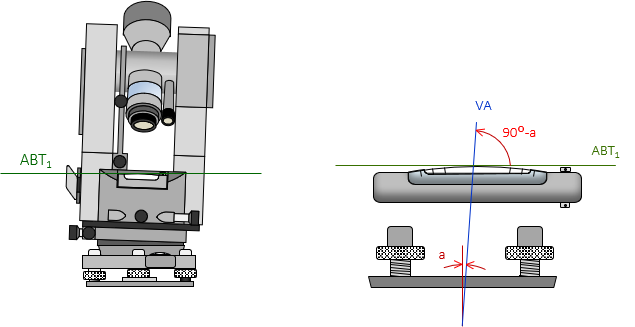 |
| Figure G-9 First Position |
If present, the amount of error is the angle a.
Rotate the instrument 180°. The angle between the ABT and VA is maintained, Figure G-10.
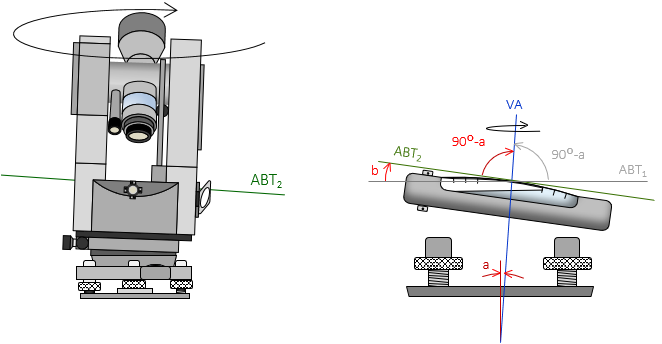 |
| Figure G-10 Rotated Position |
If there is no error, the bubble will stay centered, otherwise it will run to the higher end of the tube. In Figure G-9, the rotated instrument geometry makes angle b twice angle a; the bubble runs twice the error amount.
Generally, if the bubble runs half a division or less, it can be treated as an adjusted condition.
Note
Most TSIs are able to automatically compensate if the instrument is slightly out of level. Some will refuse to measure or display an error if the leveling is too far out. Check your instrument's Operation Manual.
(3) Compensation
(a) Procedure
Using the leveling screws, bring the bubble back half the amount it ran, Figure G-11.
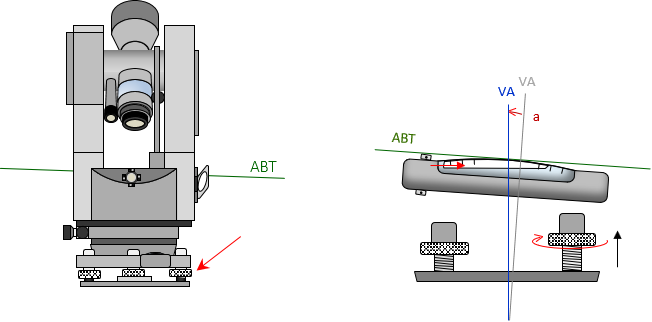 |
| Figure G-11 Procedural Compensation |
This will make the VA vertical. The ABT will be inclined by the error angle, a, so the same of the tube will always be high as the instrument is rotated about the VA.
(b) Adjustment
Use the adjusting nut(s) at one end of the tube, Figure G-12, to bring the bubble back half the run, Figure G-13.
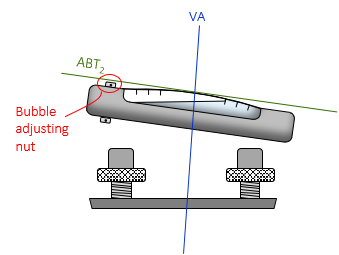 |
| Figure G-12 Adjusting Nuts |
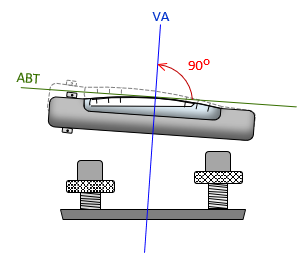 |
| Figure G-13 Adjusted Bubble |
This will make the ABT perpendicular to the VA. Now when the bubble is centered with the leveling screws, the ABT will be horizontal and VA vertical.